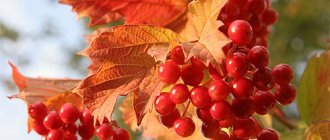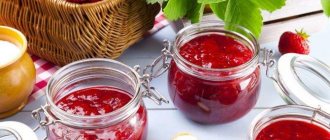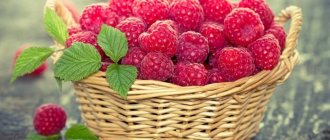Black currant
Blackcurrant contains a high content of B vitamins, vitamin A, K, E and C. In addition, the composition includes magnesium and phosphorus, zinc and iron, copper and pectins, essential oils and organic acids. This product improves immunity, removes harmful substances and cleanses the body. Fresh berry juice or tea with currant leaves is an effective solution during a cold.
This berry helps in the treatment of diseases of the digestive system and bladder, kidneys and liver, heart and blood vessels. Regular consumption of these berries increases brain activity and visual acuity. Decoctions from the leaves of this plant will help children with skin and respiratory diseases. They cleanse the body, improve tone, and help fight depression and stress.
For the first time, black currants can be given to a child after eight to nine months, if the baby does not have food allergies to other foods. To do this, prepare a puree from one or two berries. If your child has allergic reactions to any foods, do not rush to introduce these berries into the diet. Postpone this until 1.5-2 years.
Compote, fruit drink or blackcurrant jelly is given to children no earlier than one year. At first, the drink must be diluted with water. First, halve, and then gradually reduce the proportion of water and increase the concentration of juice. This berry is a strong allergen, so carefully monitor your baby’s well-being. What to do if a child is allergic to blackcurrant, see here.
Fruit drink, juice and compote from black currant, as well as the berry itself, should not be given to children with ulcers and gastritis, with high stomach acidity. The use of black currant is prohibited for thrombosis, hepatitis, thrombophlebitis and is not recommended for bleeding disorders.
Contraindications and side effects
- A strict contraindication for consuming blackcurrant is an allergy to it. The berry is not a strong allergen. Therefore, such individual intolerance rarely develops, affecting mainly those who are allergic to salicylates.
- Berry meals are prohibited for those taking phenothiazines due to an increased risk of seizures.
- Like many other foods, the benefits and harms of black currants go hand in hand. The berry thins the blood. And this is useful for preventing heart attacks and strokes. But it can be dangerous for people suffering from blood clotting pathologies, taking anticoagulants, or preparing for surgery.
It is not recommended to consume large amounts of currants, even while taking conventional non-steroidal anti-inflammatory drugs, such as aspirin or ibuprofen. And also taking dietary supplements with angelica, cloves, ginger, ginseng.
Possible side effects from eating a large currant meal are the same as from any other fiber-rich plant food. This is bloating and flatulence, diarrhea, nausea. These symptoms are unpleasant, but do not pose any health threat.
Can it be used during pregnancy?
The benefits of black currant during pregnancy are manifold. Here are some examples of its beneficial effects on the body of the expectant mother:
- protection against viruses and pathogenic bacteria, strengthening the immune system;
- eliminating constipation;
- prevention of iron deficiency anemia and saturation with folic acid, a vitamin that is especially useful for pregnant women;
- weight gain control;
- improved mood, etc.
At the same time, allergies to currants are much less common than to some other berries. For example, eating strawberries during pregnancy is associated with an increased risk of developing allergies. In this case, the occurrence of such a side effect is unlikely.
So, pregnant women can and should eat blackcurrants. But not in the later stages. Because this product thins the blood quite strongly, which can lead to the development of bleeding during childbirth.
White currant
White berries are rich in B vitamins, vitamin P, E and A. These include magnesium and sodium, phosphorus and potassium, and pectin. White currants contain less ascorbic acid than black currants, but you will find higher levels of potassium and iron. In addition, such berries do not contain dyes that can cause severe allergies.
Due to the reduced risk of an allergic reaction, this type of berry can be safely consumed by children up to one year old. It is this variety that is best introduced first at about eight months. Be sure to watch the kids' reactions! For a child under one year old, the norm of currant puree is 50 grams. For a one-year-old baby, the portion is gradually increased to one hundred grams.
White currant eliminates heavy metal salts and cleanses the body. It has a positive effect on the functioning of the heart and the elasticity of blood vessels, improves blood composition, increases visual acuity and accelerates metabolism, and strengthens the immune system. But this berry should not be eaten if you have an ulcer, gastritis or high stomach acidity.

From what month can complementary foods be introduced?
Children can try currants for the first time at 7-8 months, depending on the type of feeding.
Babies receiving breast milk are given such berries a month or two later (at 9-10 months) than bottle-fed babies (7-8 months). Children who are prone to allergies should not rush to get acquainted with currants.
The first portion should be represented by 1-2 berries. They are given in the morning, and then the baby’s reaction is observed. With normal tolerance, the amount of currants consumed per day is gradually increased to 40-50 g, and from a year onwards - up to 100 g.
Calculate your complementary feeding table
Red Ribes
This type of berries will strengthen the immune system and eliminate harmful bacteria, cleanse the body of toxins and harmful substances. Red currants contain an increased amount of B vitamins and ascorbic acid, iron and selenium, potassium and carotene. Interestingly, even in frozen berries, the maximum nutrients are retained.
Fresh berries help with anemia and weight loss. Red currant improves heart function and vision, speeds up recovery from colds and is involved in the formation of bone tissue. The product restores normal bacterial flora and normalizes stool if the baby is constipated. And currant juice increases appetite, eliminates swelling and nausea.
It is not recommended to give this berry to children younger than nine months, as there is also a possibility that a child will develop an allergy to currants. Start with a serving of 30-40 ml or grams and gradually increase to 50. After a year, you can give your child 100 grams of currants.
The product should not be given in case of ulcers and high acidity of the stomach, blood incoagulability and increased sensitivity of tooth enamel, or hepatitis. We found out whether it is possible to feed a child currants, depending on the type and variety of berries. Now let’s look at the general recommendations for complementary feeding.
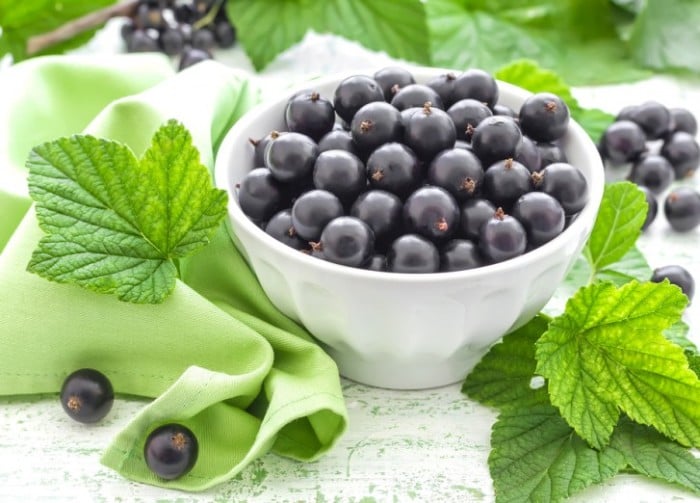
Useful properties of berries
Currants have many beneficial properties, we will try to highlight the most necessary ones for the child’s body:
- Strengthens the immune system, helps resist viruses and bacteria, this is the best home remedy for restoring vitamin C levels. Regular consumption of black currant berries will help eliminate vitamin and mineral deficiencies in the body.
- Useful for anemia. The vitamin C contained in the fruit helps the absorption and distribution of iron, so the berry is indicated for children with low hemoglobin levels. Please note that currants contain much more vitamin C than imported oranges and lemons.
- Due to its antioxidant content, it is one of the healthiest berries in the world, improves memory, and reduces the risk of cancer.
- Improves visual acuity.
- Removes radiation from the body. Black currant was widely used in the treatment of children after the Chernobyl nuclear power plant accident.
- Increases vitality.
- Improves appetite, normalizes the functioning of the stomach and intestines.
- Decoctions of leaves and berries have some calming effect, so they are recommended for sleep disorders, headaches, nervous tics, and stress.
Rules for introducing currants into complementary foods
It is recommended to introduce currant complementary foods after eight months, provided that the baby does not have a tendency to allergies. It is better to start with white berries, as they are the least allergenic. Give the baby pureed puree and watch the reaction. If there are no negative consequences, you can sometimes give this berry to your baby, but follow the norm and do not overfeed!
Choose fresh, large and dry fruits without spots, mold, cracks or other defects. The berries should be of the correct round shape and preferably on a branch, then they will remain fresh longer. You can store currants in the refrigerator for two weeks, at room temperature - no longer than five days.
Do not give small children fruits with seeds, otherwise it may cause digestive and stool disorders. Be sure to rinse and sort the berries before use! You can easily prepare various desserts, pastries, purees, compote or jelly from any type of currant.
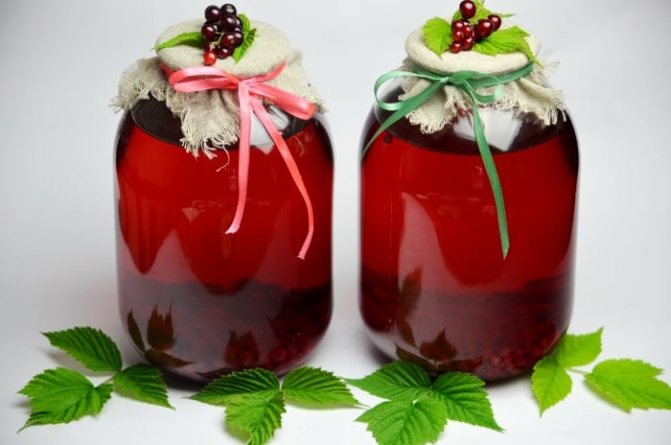
Leaves
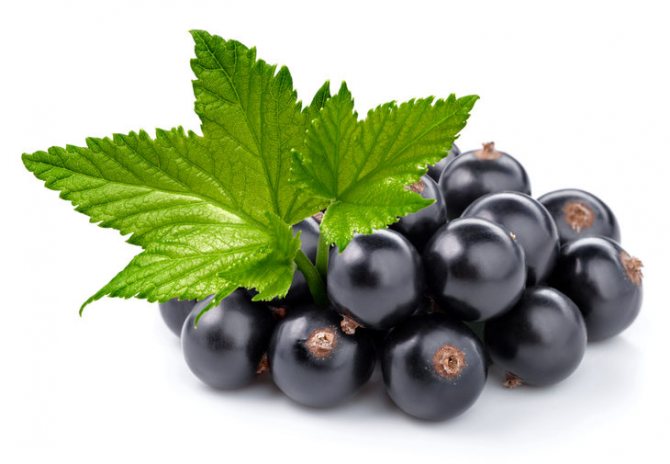
Blackcurrant leaves are extremely rich in vitamin C.
The leaves contain an incredible amount of vitamin C - twice as much as the berries - as well as beneficial minerals and flavonoids.
The leaves can be brewed yourself or added to black and herbal teas. The benefits of currant leaf tea have been proven for:
- colds;
- bronchitis;
- kidney diseases;
- cystitis;
- rheumatic reactions.
They strengthen the body, increase tone, promote better memory, and remove uric acid, purines, and oxalic acid from the body. A decoction of the leaves is a good antiseptic for the whole body. Lotions and compresses of currant leaf tea treat allergic rashes, dermatitis and other skin rashes.
To get the most useful raw materials, you need to collect it during flowering, or when buds have just appeared on the branches, dry it in a dark, ventilated room, and store it in a dark place.
Recipes with currants for children
Children's oatmeal
- Oatmeal – 1 cup;
- Any currant -100 grams
- Milk – 3 glasses;
- Jam, honey or ground walnuts - 1 tablespoon;
- Vanillin and cinnamon to taste.
Add oatmeal to boiling milk and stir. Sprinkle lightly with cinnamon and vanilla, stir and cook for one minute over medium heat, stirring the mixture continuously. Wash the currants, place them on top and add jam, nuts or honey.
Milk oatmeal is the best breakfast solution for a child. This recipe will diversify the diet of children over two to three years old and will make a familiar dish original and tasty.
Currant compote for babies
- Water – 1 glass;
- Sugar – 30 grams;
- Any currant – 150 grams.
Add sugar to water and bring to a boil. Wash and sort the currants thoroughly, remove the stem and place in water. Boil the mixture for three minutes, cool and strain. This compote retains the vitamin value of the berries even after heat treatment.
Cookie
- Flour – 1.5 cups;
- Black currant – 1 cup;
- Butter – 1 package;
- Ground nuts – 80 g;
- Powdered sugar – 100 g;
- Starch – 40 gr.
The butter should be slightly melted and softened. Mix it with powdered sugar and beat until creamy. Continuing to beat, add currants. Then add nuts, sifted flour, starch, mix the ingredients and knead the dough. Roll the dough into a sausage with a diameter of about four centimeters and wrap in cling film. Place in the refrigerator for half an hour.
After cold, remove the film, cut the dough into circles and bake in the oven at 200 degrees for ten minutes. The result is bright cookies with original color, aromas and taste. The kids will definitely love it!
Semolina dessert
- Milk – 1⁄2 cup;
- Semolina – 3 tables. spoons
- Breadcrumbs - 3 tables. spoons;
- Red currants – 300 grams;
- Water - 3 tables. spoons;
- Starch - 3 tables. spoons;
- Freshly squeezed orange juice – 2 tables. spoons;
- Sugar and salt to taste.
Bring the milk to a boil, add a little sugar and salt, then carefully pour in the semolina in a thin stream. Cook for two minutes, stirring constantly to prevent lumps from forming. After this, cool the mixture. Form the mixture into balls or dumplings, roll in breading and fry until golden brown.
Wash the berries, remove the stems, and place in a separate container. Pour in orange juice and water, bring to a boil, cool and strain. Dilute the starch in water and add to the currant-orange mixture. Bring to a boil again and cool. Pour the resulting syrup over the balls. The result is an original and very satisfying dish, which, if necessary, will help the child gain the missing weight.
Blackcurrant compote, frozen for a child
For the winter, many make preparations to pamper themselves with natural vitamins. Frozen blackcurrant compote for a child is not difficult to prepare. The benefits are not inferior to a drink made from fresh berries. Especially if the collection was carried out independently, the quality of the product is beyond doubt.
To cook frozen currant compote for a child, you need to take:
- water – ½ liter;
- sugar - a third of a glass;
- berries (frozen) – 1 cup.
When the water in the pan boils, add sugar. Stir and cook until the liquid becomes syrupy and begins to thicken. After this, put the berries in the pan; there is no need to defrost them in advance. Cook over low heat. You can put it on a plate immediately before cooking. After the mixture boils, wait a few minutes and cover with a lid. Cook for about half an hour. The currant compote for the baby is ready, all that remains is to cool it and strain it.
The amount of sugar can be changed depending on taste preferences. If you are making blackcurrant compote for a one-year-old child or infant, it is better to avoid this ingredient. It is better for children to add sugar to their dishes after a year, and then in small quantities.
If this is a new dish, then it is enough to give the baby one teaspoon of the prepared drink. Be sure to monitor the reaction.


